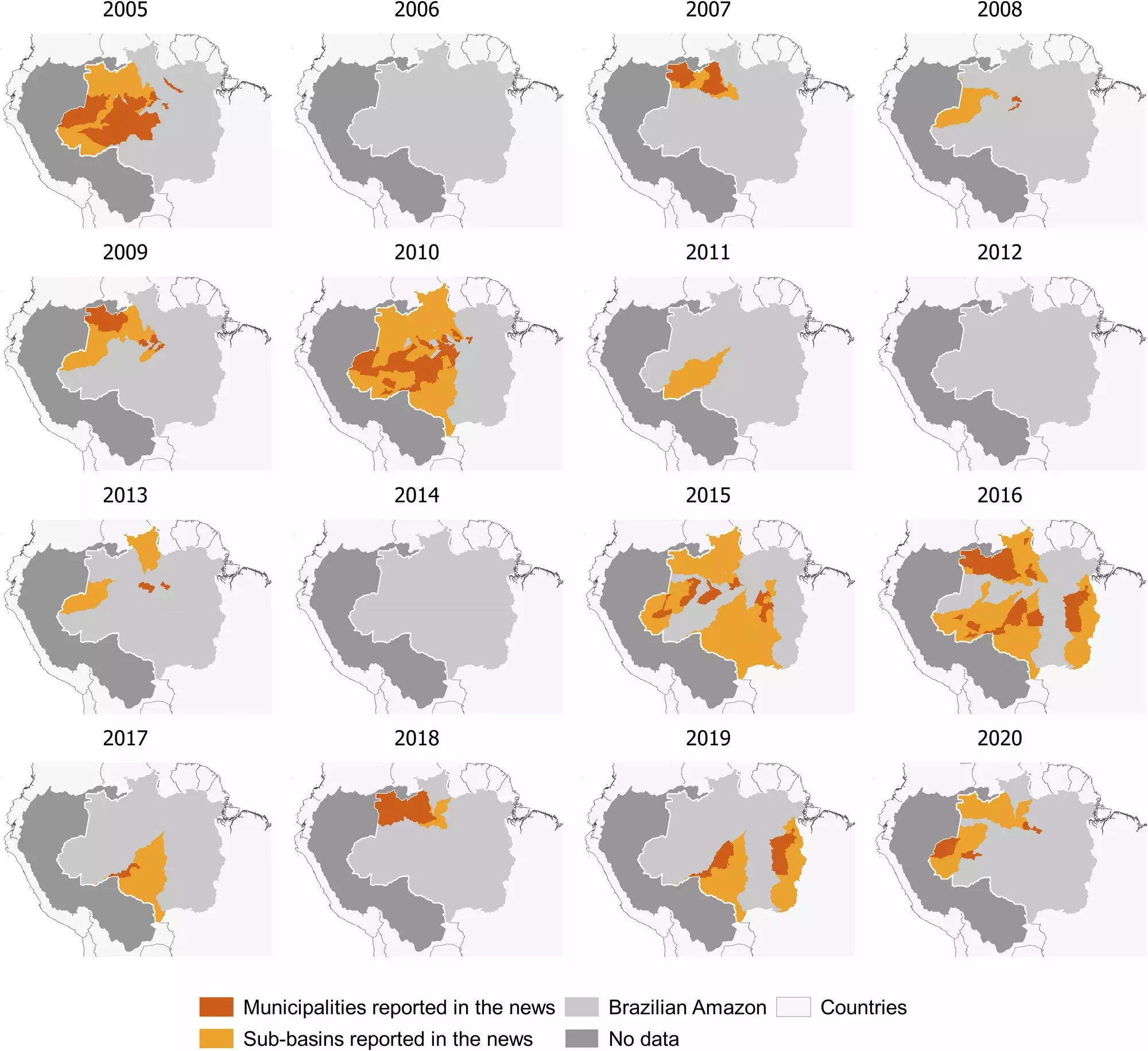Over the last two decades, the Amazon has faced severe droughts that have dramatically altered its landscape and the lives of the communities that inhabit it. A pivotal study conducted by Letícia Santos de Lima from the Institute of Environmental Science and Technology of the Universitat Autònoma de Barcelona (ICTA-UAB), in collaboration with Brazilian researchers and the Woodwell Climate Research Center, reveals a worrying trend: the Amazon’s water levels are not just decreasing; they’re staying low for longer periods than ever before. As communities have adapted to a rhythm dictated by the ebb and flow of river life, the impending crisis threatens to dismantle the very fabric of Amazonian life.
As a critical lifeline for both Indigenous and non-Indigenous populations, rivers have traditionally been the highways of the Amazon basin. The study highlights that nearly 50% of non-Indigenous and 54% of Indigenous settlements are now at risk of becoming isolated during extreme droughts. These communities often rely on boats for transportation to access vital resources, such as food, healthcare, and education. With low water levels leading to increased isolation, the hazards these populations cycle through have become more pronounced, raising urgent questions about the long-term viability of life in these waterways.
The Consequences of Isolation
Droughts have ripple effects that extend far beyond just reduced water levels. The significant droughts observed in 2005, 2010, and 2015–2016 exemplified this well, as communities grappled not only with accessing the market for goods but also with threats to their health and livelihoods. Increased isolation has inevitable social ramifications—limited access to education means reduced opportunities for the youth, while challenging healthcare access can turn ordinary ailments into dire situations with life-altering consequences.
An interdisciplinary approach employed by researchers has illuminated how climate change and human activity have exacerbated these conditions. The study meticulously maps out the cross-sectoral effects of drought on these communities, employing hydrological methods and media analysis to document the implications of these environmental shifts. It is a sobering process of connecting the dots between climate, economy, and community, revealing that the threats posed by droughts may transcend the physical world, entering into the psychological territory of uncertainty and despair.
Policy in Crisis: A Call for Action
Dr. Santos de Lima’s somber acknowledgment of the Amazon’s “new reality” is an urgent call for action—one that is evidently floundering in the face of government inaction. The study underscores a significant gap in policy-making, suggesting that governments respond reactively to such crises rather than developing long-term adaptive strategies. This approach, or lack thereof, leaves communities vulnerable to the worst impacts of climate change without the necessary resources to withstand and adapt to these challenges.
Moreover, the study points out that building more roads as a solution to community isolation is a misguided strategy. These roads often lead to deforestation, which has been effectively correlated with changes in rainfall patterns and consequent deterioration in river navigation. Thus, the very infrastructure intended to connect communities could instead facilitate ecological disruption and further exacerbate the symptoms of climate change.
Hope Amidst Despair: The Role of Local Knowledge
Despite the dire findings of the study, there is glimmering potential in the resilience of Amazonian communities. Indigenous knowledge, often marginalized in the broader discourse on climate change, offers valuable insights into sustainable living that respects the ecological balance. Empowering these communities to be active participants in policy discussions can create a more sustainable future for the Amazon. Through their traditional practices and deep connection to the land and water, they can offer innovative and adaptable solutions that foster resilience against the growing threat of extreme weather events.
In this battle against climate change, the pulse of the Amazon is more than just a matter of environmental concern—it’s a reflection of human endurance, innovation, and the pressing need for comprehensive solutions that incorporate the wisdom of those who have lived entwined with these ecosystems for generations. As the waters recede and challenges mount, the clarion call for immediate attention and action echoes louder than ever.


Leave a Reply